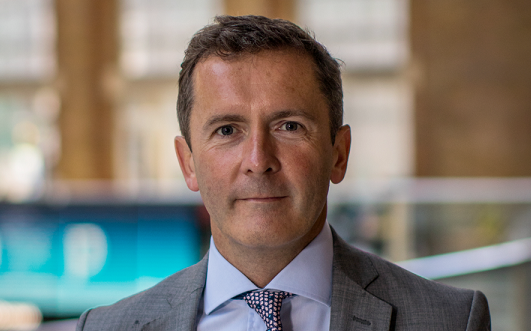Investor appetite for investments giving due consideration to sustainability metrics is palpable and fund managers know it. According to data from FE Analytics, there were 357 funds that had ‘sustainable’ in the name of the strategy as at the end of May 2019, across all retail fund domiciles.
As the rise of the sustainable investment fund has become more apparent, some have urged scrutiny of such funds due to their limited “exclusion-only” approaches or because of how they whittle down holdings within their investment universes. In addition, there are the sceptics who believe that some funds have been launched with a sustainable label purely to attract the cash of well-meaning, but gullible, investors.
Others in the sector say there is another way. Among them is Robo Global’s chief executive for the EMEA and Asia regions, Richard Lightbound.
A sustainable technology play
Robo Global is a research advisory and index firm focussed on the themes of robotics, automation and artificial intelligence. The company’s indices are used by several well-known investment managers, including Legal & General Investment Management, as the underlying index for their funds.
While it doesn’t sell any ‘sustainable funds’, it does believe that sustainability is an outcome of some of the indices that it offers.
“If you take a step back and look at what we are trying to capture in an investment universe, it ticks a surprising number of boxes naturally,” Lightbound explains. “Robotics and AI has a natural tilt towards sustainable investments.
“We have designed a strategy to capture growth and returns but the outcome of that is absolutely a strategy that is very tightly aligned with sustainable investing.”
On the face of it, these claims may seem surprising. However, there are myriad examples where robotics and artificial intelligence are being actively used by companies to achieve goals that are very much in-line with the UN’s sustainable development goals.
For example, precision agriculture robotics, is transforming modern farming practices globally. In countries previously blighted by food shortages precision agriculture technology will be a key tool in preventing hunger (SDG2) in the years to come.
This is also illustrated by advances in robotics which are improving the quality of medical procedures. The widespread use of surgical robots are making complex medical procedures safer, and are therefore contributing to achieving SDG3 “good health and wellbeing”.
“As we look at robotics and AI, it is about helping individuals to make better decisions and keeping people out of harms way,” Lightbound says.
Digging the data
However, for investors who believe that AI and robotics should be a part of their sustainable portfolio, it isn’t easy to find a database of dedicated AI companies, according to Lightbound.
“The challenge for investors is that it is a highly unstructured world. You cannot just go and get a database of AI companies. It just doesn’t exist as companies may have mixed product lines.”
When Robo Global started looking at this six years ago, the team soon realised that they needed expertise that went far beyond the standard CFA. While the company still valued its financial analysts and researchers, it also knew that it needed broader expertise to be able to examine innovation claims by companies in this area. The result was a strategic advisory board with skills specific to individual areas of technology.
“If you look at a lot of the other investment strategies which have emerged since we launched, where the product is robotics and AI, the overlap is low,” Lightbound says. “It tells you that people have a very different view of robotics and automation.”
Fund selectors can read more about the L&G Robo Global Robotics and Automation UCITS ETF here.








